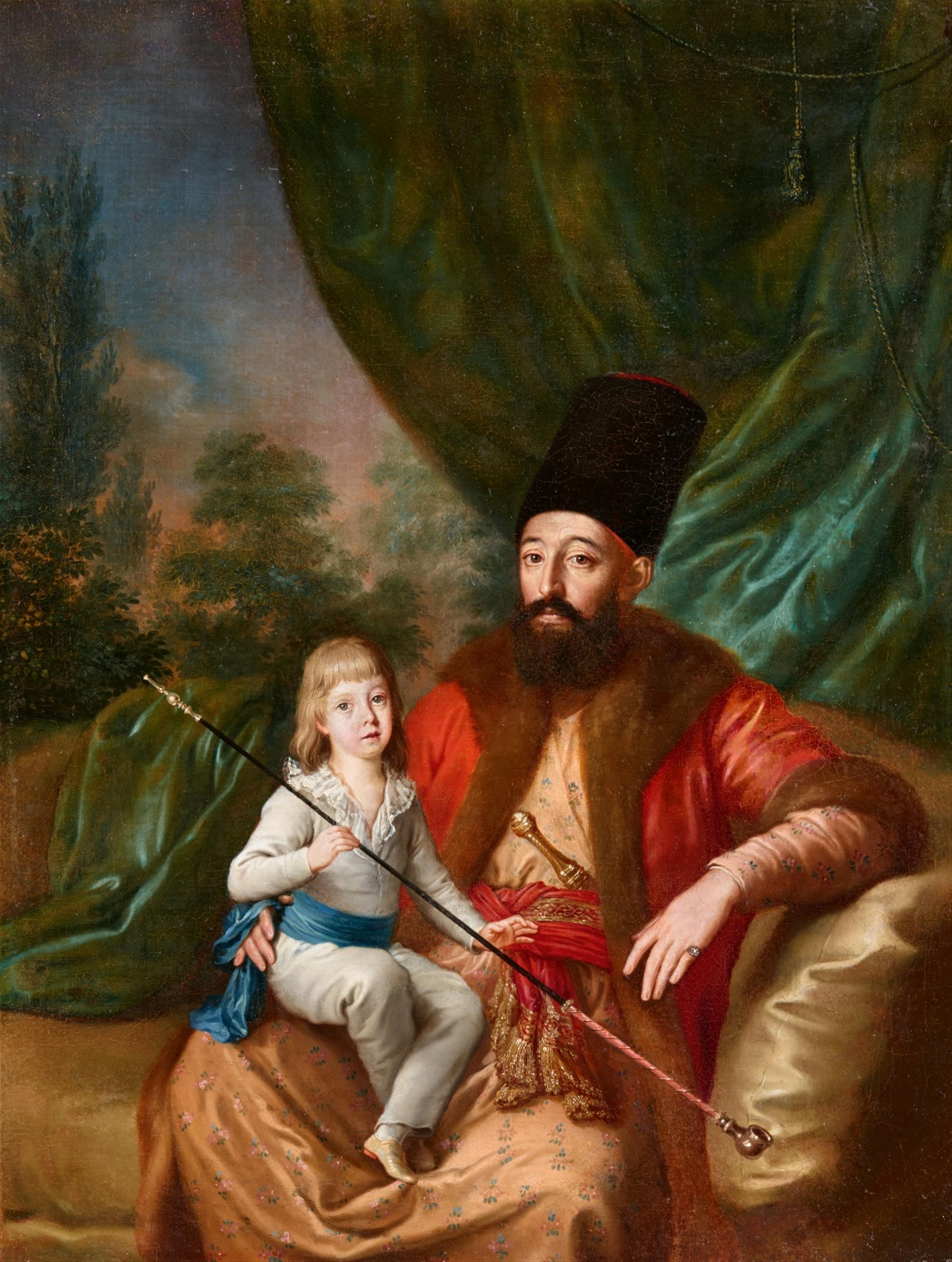French School 18th century
Portrait of a Gentleman in Ottoman Dress holding a Boy
Oil on canvas (relined). 51.5 x 40 cm.
The economic, political and cultural links between Europe and the East in the past were much firmer than we tend to recognise, and as a consequence, depictions of Islamic "Moors" and "Turks" can be found in Medieval, Renaissance, and Baroque art. To quote one of the most remarkable examples, Renaissance Venice had a phase of particular interest in depictions of the Ottoman Empire in painting and prints, and Gentile Bellini even travelled to Constantinople to paint the Sultan.
There was a stronger wave of interest in the Orient in Europe during the 18th century, and many artists, such as the Belgian Jean-Baptiste Vanmour, visited Istanbul and created numerous drawings in pastel of Turkish domestic scenes. Following his trip to the Ottoman Empire, the Frenchman Eugene Liotard continued to wear Turkish attire for much of his life when back in Europe.
Porcellain, coffee, chocolate and everything Orientalist was a leading trend amongst many European courts; travellers, tradesmen, and diplomats had themselves painted in exotic Eastern dress upon their return to Europe, as did many who had never even left the Continent, such as Madame de Pompadour.
Although it has not been possible yet to ascertain a firm attribution for this hitherto unpublished piece, the present work is certainly a very fine example epitomising this fashion. It also displays stylistic parallels with a number of portraits of sitters in Turkish costume executed by Antoine de Favray during his nine-year stay in Constantinople between 1762 and 1771. Favray´s portrait of the French ambassador, Charles Gravier, Marquis de Vergennesm, in a private collection (see A. Boppe, Les Peintres du Bosphore au XVIIIe Siècle, Paris, 1989, p. 102), depicts the Ambassador in an almost identical costume to that worn by the present sitter, a similar fur-trimmed robe and floral patterned tunic.
Attribution is not the only open question regarding this piece: generally, portraits depict a single sitter, a couple, or a family. In this case the man portrayed, possibly a merchant, diplomat or courtier, holds in his arms a young boy who is probably not related to him: who could the sitter be? A member of an aristocratic European family? Why is the boy holding a pipe, offering it to the sitter? Is it meant to be an allegory? Further research would be required to disclose the secrets behind this mysterious painting.
Provenance
Private collection in Siebenbürgen. - Hence by descent to the family. - Acquired from them by the present owner.

